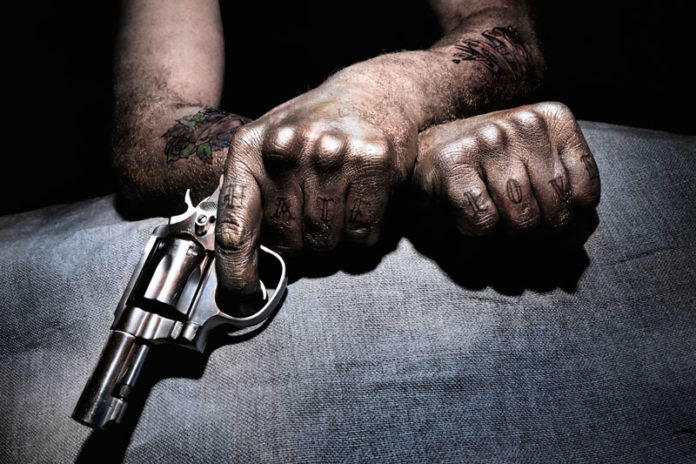After Obama’s 2013 executive order authorizing the study of “causes and consequences of gun violence” the National Institutes of Health has released $288,529 to Arizona State University to conduct a study.
However, the study is restricted only to research of young “urban” males, which they later explain is limited to “minority” males and their reasoning for carrying firearms.
The grant title, “Psychological and socio-contextual factors in gun carrying and firearms violence” came with the following description, which appears to draw its own conclusions:
Murder is the second leading cause of death among young males in the US, with most of these killings resulting from gun violence in urban minority communities. Policy and behavioral interventions to address this problem have been largely ineffective. Existing research on this issue has been almost exclusively cross- sectional, meaning that many of the factors linked to gun carrying and use (i.e., as part of an antisocial lifestyle, for self-protection, or as a product of social influence) may or may not be influential.A 2013 Presidential Memorandum provided an opportunity to conduct NIH-funded research on the causes and consequences of gun violence in urban males (PA-13-363); research previously banned by Congress. This is a response to that call for innovative research to address this issue. Longitudinal studies would provide more valid information than currently available about the purported factors related to gun carrying and use. These would, however, be lengthy and costly. The proposed project uses two of the most comprehensive longitudinal studies of males ever conducted to examine the mechanisms related to gun carrying and use in urban males from adolescence to young adulthood. Complementary analyses, using comparable measures, will be conducted with a high-risk community sample (i.e., Pittsburgh Youth Study; N=1,009) and a sample of serious juvenile offenders (i.e., Pathways to Desistance study; N=1,107). Together, these studies have information on gun carrying/use as well as theoretically relevant factors related to these behaviors (e.g., drug dealing, victimization) measured at least annually from ~ages 10 to 25. Both have a substantial proportion of youth who have carried guns and shot at others. This is a unique opportunity to do theoretically, programmatically, and policy relevant research on a pressing social problem. Applying state-of-the-art longitudinal approaches, this study will a) use intra-individual analyses to delineate the inter-related effects between individual psychological and socio-contextual variables across development, focusing on factors implicated in the current theoretical formulations regarding gun carrying and use (e.g., psychopathy, gang membership), b) examine the bidirectional effects (i.e., variables as both a cause and a consequence) of gun carrying/use and victimization and attitudes toward violence, c) identify the factors related to the transition from gun carrying to gun use, and d) examine whether certain factors (e.g., drug dealing) are more influential for gun carrying/use among minority vs. White males and whether any racial/ethnic differences are attributable to a disproportionate exposure to specific risk factors (e.g., neighborhood crime). This proposed project is a unique, cost effective opportunity to move research on gun violence forward substantially. It enriches theory about the processes of gun carrying/use, and informs interventions to make them more effective. It will identify what specific risk factors should be targeted, to whom certain types of interventions are most relevant, and the developmental point when specific interventions are most salient.
The study is clearly aimed at those young black makes who illegally carry, despite gun laws such in Chicago that are the most restrictive in the nation despite the highest crime rate.
How young black males obtain firearms as they pretend to be gangsters is not a focus of the study, rather a touchy, feely, “how do we intervene” and get them to stop wanting firearms.
The government could have saved nearly $300k of taxpayer’s hard earned dollars by realizing that in areas where violent crime is most prevalent (Chicago and D.C.) is also where citizens are not permitted to own firearms.
The correlation to race has nothing to do with a desire to own a firearm.
Personal protection, regardless of a criminal/legal occupation is a necessity . . . and only criminals own firearms where none are permitted. Those who illegally carry in a virtual “gun free zone” wield significantly more personal power and the equivalent social standing. I.e., it’s cool.
The government can make it “uncool” by honoring the Second Amendment.
There you go.
[Note to the National Institutes for Health: please remit a check for $288,529 through the address on our contact page.]































